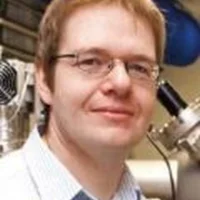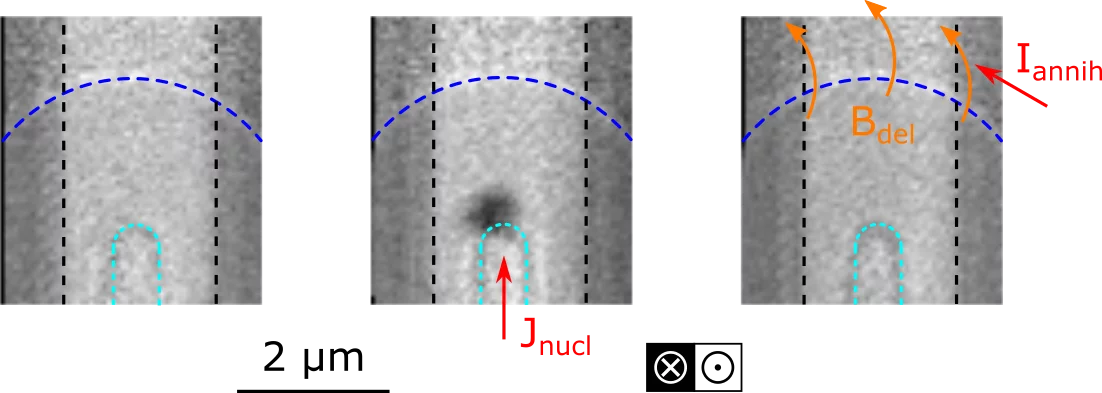Magnetic skyrmions are topologically non-trivial quasi-particles with a set of properties that makes them promising for applications as encoders for digital information. As a result of this, many different skyrmion-based memory and computation designs have recently been proposed. All of these applications, however, depend on a reproducible and reliable nucleation, displacement, detection, and deletion of the topological quasi-particles. While the displacement and detection of magnetic skyrmions have been thoroughly investigated, also at the PolLux endstation, no major attention has been given to the investigation and optimization of the skyrmion nucleation process.
Here, researchers in a joint collaboration between the magnetism research team of the PolLux endstation and the group of Prof. Christopher Marrows at the University of Leeds (within the framework of the EU Horizon 2020 MagicSky project), demonstrated the reliable and reproducible electrical nucleation of magnetic skrymions using a nano-engineered point contact structure. Importantly, thanks to a thorough material optimization process, the nucleation and manipulation of magnetic skyrmions under no external bias fields, a fundamental requirement for improving the applicability of magnetic skyrmions in electronic devices, could be demonstrated.
Thanks to the combined high spatial and temporal resolution of the PolLux STXM, the two teams were able to not only demonstrate the reliable and reproducible nucleation of the magnetic skyrmions from the nano-engineered point contact, but also to investigate the sub-ns dynamical processes occurring during the nucleation of the skyrmions. This allowed to shed light on the physical mechanisms driving the nucleation process. In particular, it was observed that the nucleation process is driven by the spin-orbit-torque induced switching of the magnetization induced by the injection of a current pulse from the tip of the nano-engineered point contact.
These findings, recently published in the journal Nano Letters, provide a substantial improvement in the design of reliable skyrmion nucleators operating without external biasing fields, which allow the low-energy writing (< 500 pJ) of magnetic skyrmions.
Contact
Dr. Jörg Raabe
Swiss Light Source
Paul Scherrer Institut
Telephone: +41 56 310 5193
E-mail: joerg.raabe@psi.ch
Original Publication
Deterministic Field-Free Skyrmion Nucleation at a Nanoengineered Injector Device
Simone Finizio, Katharina Zeissler, Sebastian Wintz, Sina Mayr, Teresa Weßels, Alexandra J. Huxtable, Gavin Burnell, Christopher H. Marrows, Jörg Raabe
Nano Letters, 2019
DOI: 10.1021/acs.nanolett.9b02840

